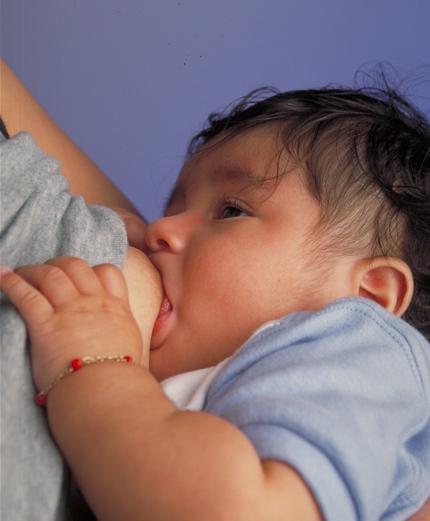blocked milk duct on:
[Wikipedia]
[Google]
[Amazon]
A blocked milk duct (sometimes also called plugged or clogged milk duct) is a blockage of one or more ducts carrying milk to the nipple for the purpose of breastfeeding an

infant
An infant or baby is the very young offspring of human beings. ''Infant'' (from the Latin word ''infans'', meaning 'unable to speak' or 'speechless') is a formal or specialised synonym for the common term ''baby''. The terms may also be used to ...
that can cause Mastitis. The symptom
Signs and symptoms are the observed or detectable signs, and experienced symptoms of an illness, injury, or condition. A sign for example may be a higher or lower temperature than normal, raised or lowered blood pressure or an abnormality showin ...
s are a tender, localised lump in one breast, with redness in the skin over the lump. The cause of a blocked milk duct is the failure to remove milk from part of the breast. This may be due to infrequent breastfeeding, poor attachment, tight clothing or trauma to the breast. Sometimes the duct to one part of the breast is blocked by thickened milk. A blocked milk duct can be managed by improving the removal of milk and correcting the underlying cause.
Causes
Blocked milk ducts are a common breastfeeding problem and can be caused due to a number of reasons: * When the infant does not latch properly * Wearing a tight bra or tight clothing can restrict the breasts and put pressure on them leading to a blocked milk duct * A bad or weak pump could lead to a drainage issue * When the breast milk is not removed regularly, the milk can back up and create a blockage * A nipple bleb can also block the milk duct * When the body produces milk in over abundance, it can engorge the breast and hence lead to a blockage * Other reasons include fatigue, over exercise, dehydration and weaning.Symptoms
A blocked milk duct has the following commonsymptoms
Signs and symptoms are the observed or detectable signs, and experienced symptoms of an disease, illness, injury, or condition. A sign for example may be a higher or lower temperature than normal, raised or lowered blood pressure or an abnormali ...
:
* Low fever and breast infection
* Pain in a particular side of the breast
* Swollen or tender lump in the breast
* Slower milk flow
* a small white blister
A blister is a small pocket of body fluid (lymph, serum, plasma, blood, or pus) within the upper layers of the skin, usually caused by forceful rubbing (friction), burning, freezing, chemical exposure or infection. Most blisters are filled wi ...
on the nipple called a milk bleb
* swelling or redness of the breast
* areas of the breast that are hot or warm to touch
* the infant may feel fussy when feeding from the affected breast

Treatment
The most effective treatment against blocked milk ducts is to empty the affected breasts by frequent breastfeeding or pumping. Numerous other treatment approaches have been suggested, however, there is insufficient clinical research to determine the effectiveness. Treatments that have been studied but have no strong evidence for or against their use: * A gentle massage of the affected breast Sometimes after gentle massage over the lump, a string of the thickened milk comes out through the nipple, followed by a stream of milk, and rapid relief of the blocked duct. * Ensuring a correct positioning and latching of the baby * Wearing loose clothing items that do not bind the breasts * Applying warm compresses * Drinking a specialized herbal tea *Acupuncture *Gua-Sha *Proteolytic enzymes A blocked milk duct can result from a nipple bleb. Both of these can lead to mastitis.References
Breast anatomy Human female endocrine system {{Womens-health-stub